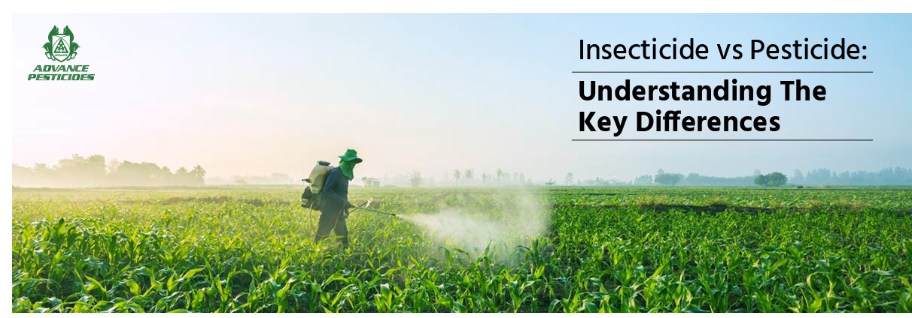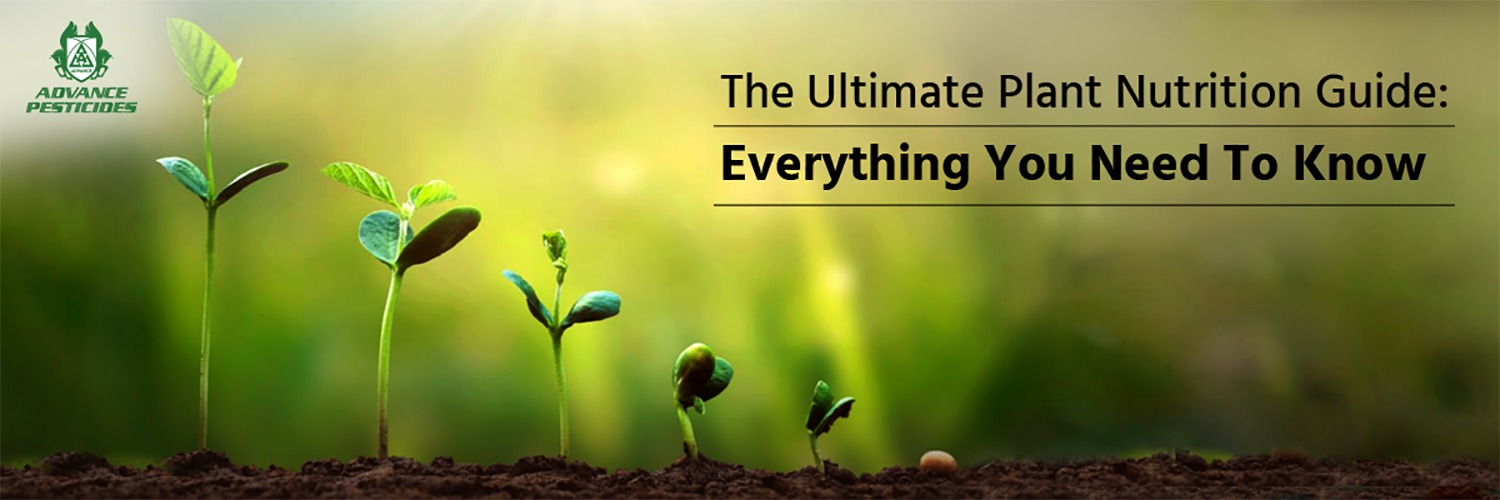Insecticides vs. Pesticides: Understanding the Key Differences | Advance Pesticides

Insecticides are chemical substances or formulations designed specifically to combat and control insect populations. They are a vital component of modern agriculture and pest management systems. Insecticides target a wide range of insects, including harmful pests that damage crops, transmit diseases, or infest homes and structures. These chemicals are employed to mitigate the economic and health risks associated with insect infestations. Insecticides can be classified into various categories based on their mode of action, chemical composition, and application methods. They play a crucial role in safeguarding food production and public health by preventing insect-related damage and diseases. Related Blog: Insecticides: Overview, Types, Uses and Benefits - A Comprehensive Guide Pesticides encompass a broader category of chemicals used in agriculture, horticulture, and public health to control a wide range of pests, including insects, weeds, fungi, and rodents. In addition to insecticides, pesticides also include herbicides (for weed control) and fungicides (for fungal disease management). Pesticides serve as essential tools in modern agriculture, enabling farmers to protect their crops and increase yields by managing various threats to plant health. Pesticides are deployed to maintain the quality and quantity of agricultural produce, reduce post-harvest losses, and manage pests that could harm the environment and human health. They are designed to target specific pest types while minimizing harm to non-target organisms and ecosystems. When comparing insecticides and pesticides, it's important to understand their distinctions, as insecticides are a subset of pesticides. Here are the key differences between the two: Insecticides are valuable tools in pest management, but they come with both advantages and potential drawbacks. Here, we explore the benefits and risks associated with the use of these chemicals - Pesticides, vital tools in modern agriculture and pest management, bring both benefits and challenges to the table. Designed to combat pests threatening crops and public health, they have transformed food production and disease control. This discussion explores the benefits of pesticides, highlighting their role in boosting agricultural productivity, ensuring food security, and preventing diseases. Choosing the right pest management strategy is essential for effective and sustainable agriculture. The decision between using insecticides or pesticides depends on various factors that should be carefully considered. Here are key factors to weigh when making this choice: Identify the specific pest or pests causing problems, as certain insects, weeds, or fungi may be better controlled with insecticides, while others require broader pesticide solutions. Assess the potential environmental consequences of your choice. Insecticides may have a more localized ecological impact compared to pesticides, which can affect a wider range of organisms and ecosystems. Consider the type of crop being cultivated. Some crops may be more susceptible to certain pests, influencing the choice of pest control method. Determine whether precision targeting of a particular pest or a more comprehensive approach is needed. Insecticides are more specialized, while pesticides address a broader spectrum of pests. Evaluate the risk of developing pesticide or insecticide resistance among pest populations. Frequent use of the same chemicals can lead to resistance, necessitating a rotation of products. Ensure compliance with local regulations and restrictions regarding pesticide and insecticide use, including safety guidelines and application methods. To provide a quick and clear overview of the differences between insecticides and pesticides, we present a summary comparison table below. This table highlights key distinctions in their scope, functionality, composition, and more, aiding in informed decision-making when it comes to pest control strategies. Aspect Insecticides Pesticides Scope of Target Primarily insects and arthropods A broader range of pests, including weeds, fungi, and rodents Functionality Specialized for insect control Addresses a wider spectrum of pest types Chemical Composition Designed for combating insects May include insecticides, herbicides, and fungicides Application Methods Sprays, dusts, baits, systemic treatments Diverse methods based on target pest and crop Environmental Impact Localized ecological impact Broader environmental implications Purpose Protect crops, control insect-borne diseases Multiple purposes, including weed and fungal disease management Aspect Insecticides Pesticides As the distinction between insecticides and pesticides is essential for effective pest management, questions often arise. Here, we address some frequently asked questions to provide clarity on the differences and similarities between these two crucial components of pest control. Q1. What are some common chemical compounds used in insecticides and pesticides? Insecticides and pesticides use a variety of chemical compounds. Common insecticides include pyrethroids, neonicotinoids, organophosphates, and carbamates. Pesticides, on the other hand, encompass a broader range of chemicals, including herbicides for weed control (e.g., glyphosate) and fungicides for fungal disease management (e.g., copper-based compounds). Q2. Can pesticides harm beneficial insects? Yes, pesticides have the potential to harm beneficial insects such as pollinators (e.g., bees and butterflies) and natural predators (e.g., ladybugs and parasitoid wasps) when not used judiciously. This collateral damage underscores the importance of careful application to minimize the impact on beneficial species. Q3. Are insecticides more toxic than pesticides? Insecticides and pesticides vary in toxicity, and it depends on the specific chemical compounds used. Some insecticides may indeed be more toxic than certain pesticides. However, the overall toxicity depends on the active ingredient and its concentration in the formulation. Q4. What types of pests do insecticides target? Insecticides are primarily designed to target insects and related arthropods. They are most effective against insect pests that can damage crops, transmit diseases, or infest homes and structures. Q5. Do insecticides specifically kill insects, or can they target other pests as well? Insecticides are specialized for insect control and are primarily effective against insects and arthropods. While they may have some impact on other pests like mites or spiders, their primary purpose is to combat insect infestations. For broader pest control, including weeds and fungi, a combination of insecticides, herbicides, and fungicides may be necessary, collectively referred to as pesticides. Insecticides and pesticides are vital tools in pest management, offering benefits such as increased agricultural productivity and disease prevention. However, their use comes with environmental and health risks that require careful consideration. While insecticides are specialized for insect control, pesticides encompass a wider range of pests. Choosing between them depends on factors like the type of pest and environmental impact. Balancing the benefits and risks is essential, emphasizing the need for integrated pest management (IPM) that combines various strategies. By understanding the distinctions between these chemicals, we can navigate the complex landscape of pest control, promoting sustainable agriculture and environmental responsibility. As agriculture continues to evolve, so does the technology and innovation behind crop protection. Advanced pesticides represent a crucial component of modern agriculture, offering enhanced methods for safeguarding crops and ensuring global food security. Insecticides vs. Pesticides: Understanding the Key Differences
What Are Insecticides?
What Are Pesticides?
Insecticides vs. Pesticides: Key Differences
1. Scope of Target:
2. Functionality:
3. Chemical Composition:
4. Application Methods:
5. Environmental Impact:
6. Purpose:
Benefits and Risks of Insecticides
Benefits:
Risks:
Benefits and Risks of Pesticides
Benefits:
Risks:
Factors to Consider When Choosing Between Insecticides and Pesticides
1. Type of Pest:
2. Environmental Impact:
3. Crop Type:
4. Targeted Approach:
5. Resistance Management:
6. Regulatory Compliance:
Insecticides vs. Pesticides: Summary Comparison Table
FAQs about Difference Between Insecticides and Pesticides
Conclusion
Crop Protection with Advance Pesticides!




